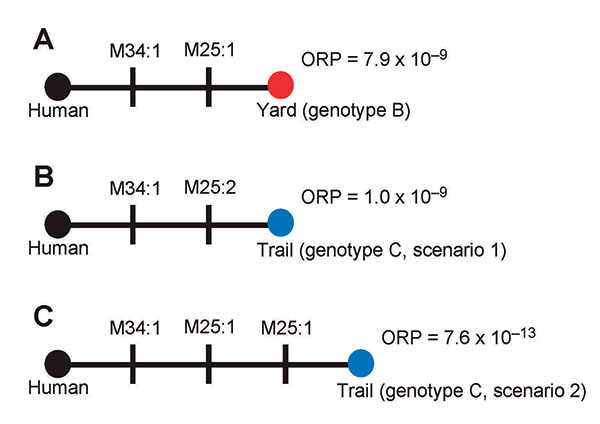Volume 15, Number 10—October 2009
Dispatch
Fine-scale Identification of the Most Likely Source of a Human Plague Infection
Figure 2

Figure 2. Alternate infection source hypotheses for the plague cases in the persons who visited New York, New York, USA. Closed circles indicate genotypes; black, red, and blue circles indicate genotypes A, B, and C, respectively. Individual mutations are indicated as vertical lines on the comparisons and are labeled with the locus that mutated and the number of repeats involved in the mutations. Overall relative probabilities (ORP) based on Yersinia pestis mutation rates are presented for each comparison.
Page created: December 08, 2010
Page updated: December 08, 2010
Page reviewed: December 08, 2010
The conclusions, findings, and opinions expressed by authors contributing to this journal do not necessarily reflect the official position of the U.S. Department of Health and Human Services, the Public Health Service, the Centers for Disease Control and Prevention, or the authors' affiliated institutions. Use of trade names is for identification only and does not imply endorsement by any of the groups named above.